It's so Swedish
-
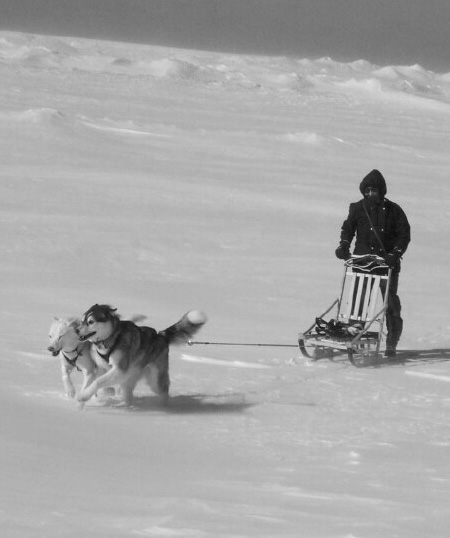 A spark.
A spark. -
-
It’s just so… Swedish!
Or is it? There are certain things that are so Swedish, they could be symbols for our country. And we’re not talking about traditional ornaments like a midsommarstång or a Lucia krona. No, we mean everyday things like plättar, hallonsaft, Kalles kaviar and an osthyvel. We take a closer look at objects and behaviors to see if they really are as Swedish as we’d like to think they are. -
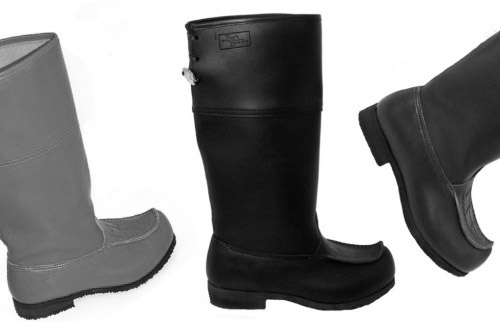 Näbbstövlar on the go.
Näbbstövlar on the go. -
-
Spark
Its real name is sparkstötting, shortened to spark or, in English, kicksled. It’s a vehicle of sorts, consisting of a chair mounted on a pair of flexible metal runners, which extend backward to about twice the chair’s length. There’s a handlebar attached to the top of the chair back. The first definite record of a spark or kicksled was in a newspaper in northern Sweden around 1870. In those days the spark had stiff wooden runners and was quite heavy. In 1900 the design of the modern kicksled with flexible metal runners was introduced by the Swedish factory Orsasparken. Only one producer of kicksleds exists in Sweden and that is Vansbro Sparkfabrik - they make 4 models and produce 13,000-15,000 kicksleds a year. E.S. Lahtinen (Esla) in Finland is probably the biggest producer of kicksleds in Scandinavia. It also makes a competitive kicksled known as the Esla Kickspark. -
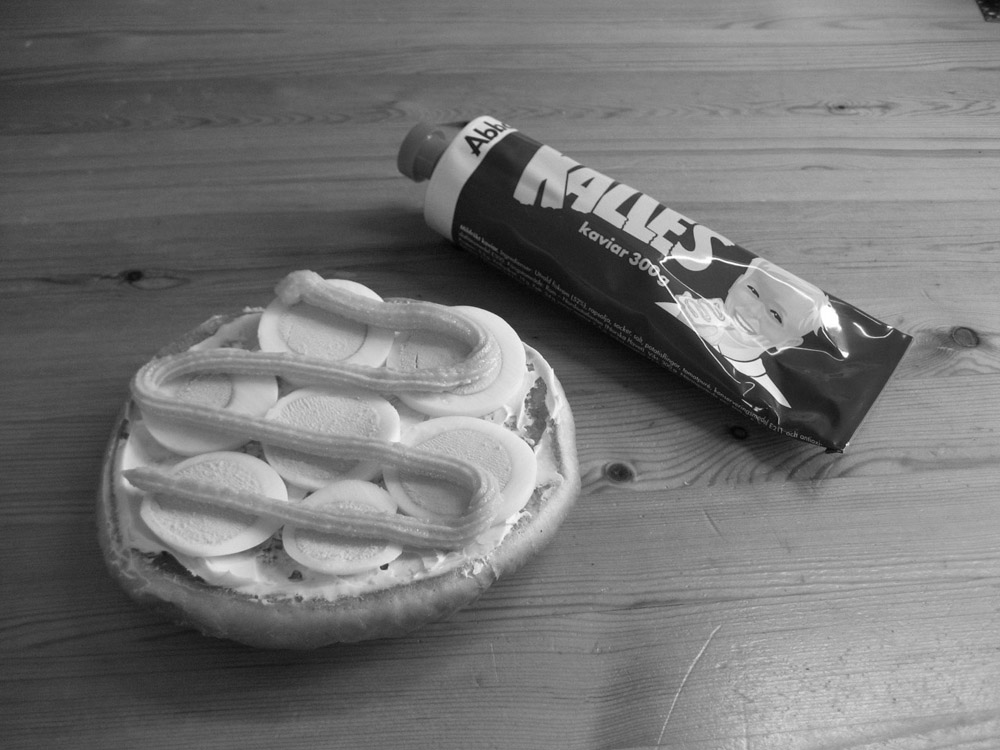 A "macka" (sandwich) with eggs and Kalles.
A "macka" (sandwich) with eggs and Kalles. -
Näbbstövlar
Näbbstövlar, or beak boots, were popular in Sweden during the 1970’s, especially if you were a “proggare” (i.e. listened to progressive Swedish music, leaned to the political left and were anti all things commercial). Näbbstövlar were usually made of light brown leather and cut in such a way that a little “näbb” or beak was created in the front. Näbbstövlar were originally a part of the traditional Sami costume. They seem to be on the verge of a comeback and will perhaps make their way to the fashion runway! -
 Lagom. Just like in the story about The Three Bears and Goldilocks, lagom is neither too cold nor too hot, just... lagom.
Lagom. Just like in the story about The Three Bears and Goldilocks, lagom is neither too cold nor too hot, just... lagom. -
Kalles kaviar
Kalles kaviar is a Swedish brand of fish roe spread that, despite its name, is not comparable to regular caviar. Its main ingredients are tomato sauce, fish roe and sugar. Kalles kaviar has been a commercial success in Sweden ever since its market launch in 1954, but attempts to launch it in the Swedish food section of the IKEA stores abroad have failed. The tube has maintained the same design from the beginning, depicting the son of the then CEO of the manufacturing company. The tube design is easily recognizable and has become a symbol of 1950’s nostalgia in Sweden. -
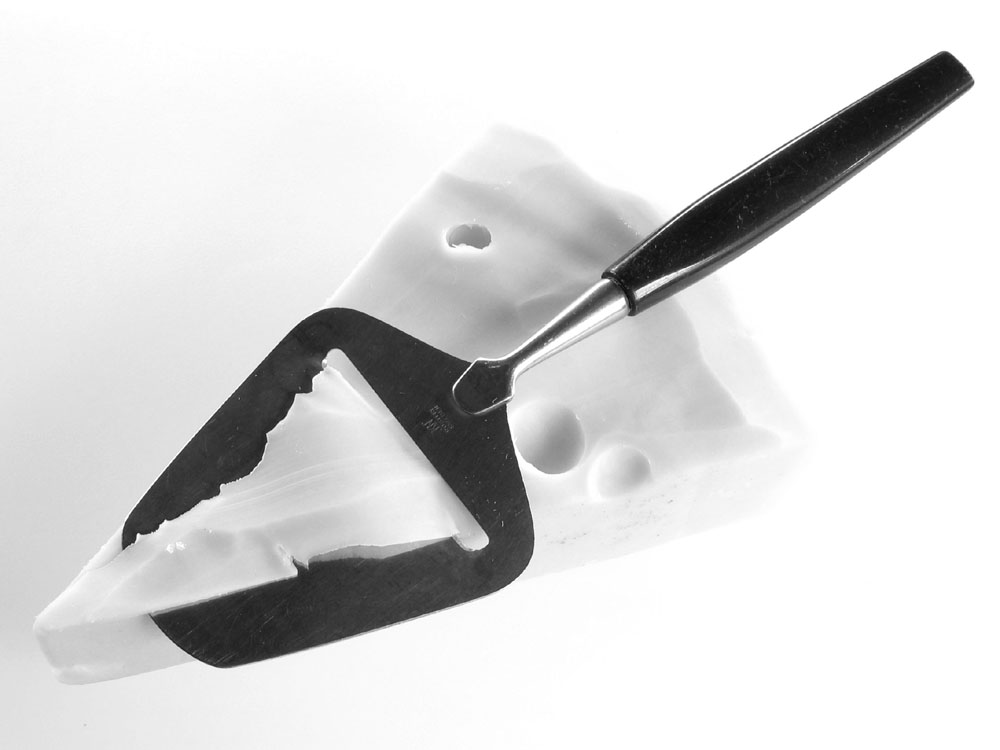 Osthyvel. Not Swedish but Norwegian. But smart nevertheless.
Osthyvel. Not Swedish but Norwegian. But smart nevertheless. -
Jantelagen
The Jante Law (Swedish: Jantelagen) is a concept created by the Norwegian/Danish author Aksel Sandemose in his 1933 novel “A refugee crosses his tracks” (En flygting krydser sit spor). The small Danish town, Jante, is modeled upon his native town, Nykøbing Mors, as it was in the beginning of the 20th century, but typical of all very small towns, nobody is anonymous. There are ten different rules in the law, but they are all variations on a single theme and are usually referred to as a homogenous unit: “Don’t think you’re anyone special or that you’re better than us.” The ten rules are:
1. Don’t think that you are special.
2. Don’t’ think that you are of the same standing as us.
3. Don’t think that you are smarter than us.
4. Don’t fancy yourself as being better than us.
5. Don’t think that you know more than us.
6. Don’t think that you are more important than us.
7. Don’t think that you are good at anything.
8. Don’t laugh at us.
9. Don’t think that anyone cares about you.
10. Don’t think that you can teach us anything.
In the book, those who transgress the Jante Law (it should be said that this is an unwritten “law”) are regarded with suspicion and hostility, as doing so goes against communal desire in the town, which is to preserve social stability and uniformity. The Jante Law has become symbolic of what many see as a permeating cultural code in Norway, Sweden, Denmark, and other Nordic countries: it is frowned upon to appear to elevate oneself or claim to be better or smarter than others. Those who assert to the influence of the Jante Law often maintain that the values of the Danish and other Nordic welfare states can be credited to the persistence of the Jante Law, in particular their stress on social equality and their emphasis on fairness for all. Others point to such traits as Protestant work ethic and an early development of a modern central government in the Nordic states. The Jante Law is a product of the agrarian society that existed in Scandinavia until the beginning of the 20th century, where adherence to social norms was necessary to maintain cohesion and stability in the small villages. Due to a fairly recent industrialization compared to many other countries, as well as a general sparse population, Scandinavia has maintained many social aspects of this society even while being among the most modernized regions in the world. -
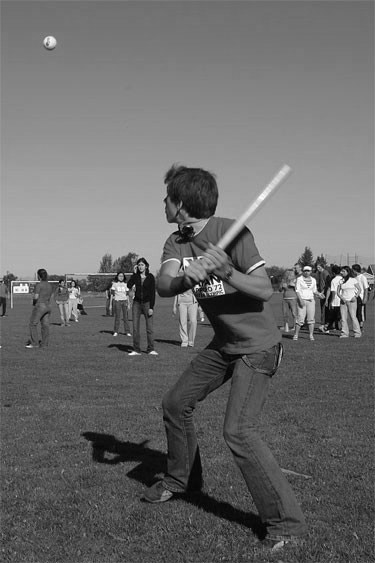 A sure sign it's spring in Sweden - people play brännboll.
A sure sign it's spring in Sweden - people play brännboll. -
Lagom
Lagom is a Swedish word with no direct English equivalent, meaning “just the right amount”. According to the dictionary lagom means “enough, sufficient, adequate, just right”. Lagon is also widely translated as “in moderation”, “in balance”, “optimal”, “suitable”, and “average”. The archetypical Swedish proverb “Lagom är bäst” literally “Lagom is best” is translated as “There is virtue in moderation”. A popular, though incorrect, folk etymology claims that it is a contraction of "laget om" ("around the team"), a phrase used in Viking times to specify how much mead one should drink from the horn as it was passed around in order for everyone to receive a fair share. This story is recounted widely, including on the Web site of the Swedish Institute. Lagom can be used as an adverb, as in the sentence "Han har lagom mycket pengar" (literally "He has lagom much money"). Lagom can also be used as an adjective: "Klänningen var lagom för henne" (literally "The dress was lagom for her"), which would be equivalent to "The dress was suitable enough for her". The adjective form is never inflected. Lagom can be applied to everything from food and drink to copyright law and carbon dioxide emissions. If asked "How much coffee do you want?" one could say "Lagom, please".
Lagom is also said to describe the Swedish national psyche, one of consensus and equality. In recent times Sweden has developed greater tolerance for risk and failure, but it is still widely considered ideal to be modest and avoid extremes at all costs. Lagom comes from the word “lag” as in law” or “according to law”. -
Osthyvel
No, it’s actually not Swedish – the osthyvel (or cheese slicer) – it’s Norwegian. The original cheese slicer was invented and patented in 1925 by Thor Bjørklund, a carpenter from Lillehammer, Norway. Bjørklund designed the osthyvel based on the carpenter’s plane. This style of slicer is very common in the Nordic countries, the Netherlands, Belgium, Germany, France, and Switzerland where cheese is most often eaten as slices. -
Brännboll
The oldest proof of any kind of ball game in Scandinavia comes from the year 400, where on a horn there’s a picture of a man throwing a ball to two other men who are reaching out to catch it. Brännboll isn’t quite that old. Brännboll, the way it is played today with four bases, was probably established as a game sometime towards the end of the 19th century.
The game is similar to baseball and is played throughout meadows and public parks in Sweden, Norway and Denmark, but it is also part of the PE curriculum in some areas. The main difference from baseball is that there is no pitcher, instead the batter himself hits the ball (usually a common tennis ball) with his bat. The bat is sometimes a wooden baseball bat, but less experienced players may use a paddle-like variation). After hitting, the batter drops the bat and makes his way counter-clockwise (or clockwise) around the four positioned bases while the outfield players – who do not wear gloves – try to catch the ball and throw it to an appointed "burner", belonging to their team. The "burner" (Brännaren) needs to hold the ball in his hand, while simultaneously stepping on a small board on the ground – resembling a pitcher's plate in baseball – and yell "bränd" (burned), which ends the round. If the infield runner(s) are by then not positioned on a "base" they are "burned" and forced to go back to the first base or the previous passed base depending on rules (a person on his way to the first base may not be burned). A game is played in timed periods, often 2 or 4, and the teams switch sides in between them. However, if there is only one player left to bat and no player makes it to the fourth base during that round, or the last batter fails to produce a valid hit in his two attempts, the team is "burned out" (utebrända), and the opposite team either gets a predetermined amount of bonus points (and everyone on the team gets back in line for batting) or the time period ends and the teams shift sides. -
-
-
